2013
State-county investment in court system provides high rate of return for Wisconsin
Madison, Wisconsin - February 6, 2013
The financial partnership between Wisconsin counties and the state court system provides a justice system with a high rate of return on investment for the people of Wisconsin, state Supreme Court Chief Justice Shirley S. Abrahamson told members of the Wisconsin Counties Association today.
Abrahamson spoke at the association's 2013 Legislative Exchange in Madison, where county officials gathered to discuss the important issues facing counties around the state.
The state invests less than one penny of every state tax dollar to support the judicial branch of government, including trial courts in all 72 counties and two levels of appellate courts, Abrahamson said.
"Courts play a crucial role in the quality of life in all Wisconsin communities. The courts help ensure that the law is not just words written on paper but that the law has meaning. The investment that the counties and the state make in the judicial system directly contributes to the economic health of our communities," Abrahamson said. Courts also resolve criminal cases and help settle disputes that have not been resolved amicably, including family disputes, she added.
The Wisconsin Supreme Court's 2013-15 state budget request would help ensure a continued return on investment for the people of Wisconsin by boosting financial assistance to the counties and increasing compensation to attract and retain quality judges and staff.
"The court system, like everyone else, made sacrifices during difficult times. The time for deferred maintenance, however, is coming to an end. We need to tune up the system with more state funding," Abrahamson said.
Abrahamson highlighted the innovation of the Treatment Alternatives and Diversion (TAD) program, which enables counties to establish and operate programs based on effective alternatives to incarceration for criminal offenders who abuse alcohol or illegal substances.
A recent study (external link) sponsored by the Wisconsin Office of Justice Assistance, the state Department of Corrections and the state Department of Health Services found that every $1 invested in TAD yields benefits of $1.93 to the criminal justice system.
Abrahamson also highlighted:
- Technological innovations by Consolidated Court Automation Programs, such as the expansion of electronic filing and availability of online forms for litigants, attorneys and jurors.
- Evidenced-based practices, which enhance public safety and reduce recidivism.
- Problem-solving treatment court programs – one of the evidence-based practices being used by the courts that address addictive behaviors that are often at the root of criminal activity.
In addition to encouraging further investment in the court system, Abrahamson urged the state to help address the growing numbers of self-represented litigants. Increasingly, people are representing themselves without counsel in family law cases and small claims court, as well as in other civil cases because they cannot afford an attorney.
"The result is that individuals in our communities, without legal assistance, struggle to stay in their homes, to keep their children, to get government benefits, or to protect themselves from abusers," Abrahamson said.
"The justice system defines who we are as a people and what we value as a state. We must move forward to fulfill our aspiration of equal justice for all under the law. The executive, legislative and judicial branches at the state and county levels must be creative to ensure access to justice for indigent and low income persons. Rationing justice does not serve our communities or the court system well," Abrahamson said.
Contact:
Tom Sheehan
Court Information Officer
(608) 266-1298

